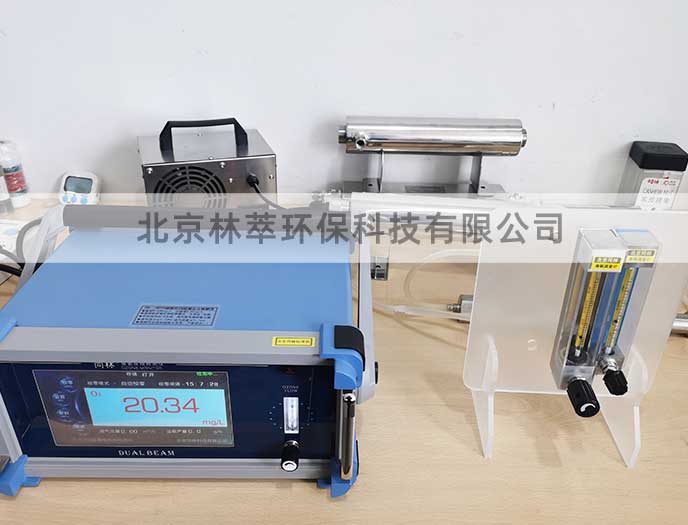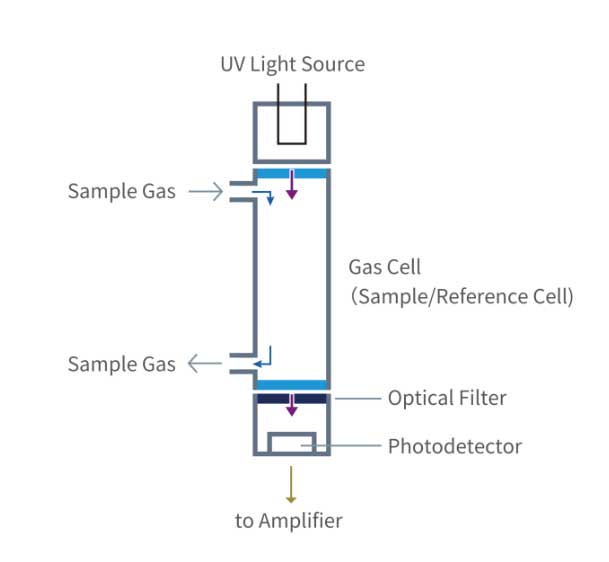What are the national standards for ozone detectors?
What are the national standards for ozone detectors?

With the tightening of environmental protection policies and the enhancement of health awareness, the demand for ozone detectors in industrial safety, environmental monitoring and household scenarios has soared. To ensure the accuracy and compliance of equipment, the state has updated a number of national standards. The core standards of include :
I. Chinese National Standard (Mandatory/Recommended)
Youdaoplaceholder0 1.GB/T 18883-2025 Indoor air quality standard
Youdaoplaceholder0 Core content :
Ozone concentration limit: 1-hour average ≤0.16mg/m³ (approximately 0.08ppm).
Requirements for the testing instrument: accuracy ±5%, range 0-0.5ppm.
Youdaoplaceholder0 applicable scenarios : air quality monitoring in homes, offices and public places.
2.GB 12358-2023 "Ozone Detection and Alarm Instrument for Workplaces"
Youdaoplaceholder0 Core content :
Ozone safety threshold for industrial scenarios: 8-hour average ≤0.1ppm, short-term exposure ≤0.3ppm.
Instrument requirements: Explosion-proof certification, sound and light alarm, error ≤±3%.
Youdaoplaceholder0 applicable scenarios : industrial environments such as chemical engineering, printing, water treatment, etc.
3.GB/T 37820-2025 Technical specification for electrochemical Ozone detector
Youdaoplaceholder0 Core content :
The sensor life is no less than 2 years, and the calibration cycle is no more than 6 months.
Data storage ≥ 10,000 entries, supporting Bluetooth /WiFi transmission.
Ii. Youdaoplaceholder0 Environmental Protection and Industry Standards
Youdaoplaceholder0 1.HJ 590-2024 Technical Specification for Automatic Monitoring of Ozone in Ambient air
Youdaoplaceholder0 Core content :
The ultraviolet absorption method is used as the reference method, with a resolution of ≤0.001ppm.
It should have the function of temperature/humidity compensation.
Youdaoplaceholder0 2.JB/T 12955-2025 General Specification for Ozone Detectors for industrial use
Youdaoplaceholder0 Core content :
Dust and water resistance grade ≥IP65, response time ≤15 seconds.
Supports multi-gas module expansion (such as VOCs, CO₂).
Iii. Youdaoplaceholder0 International standard reference
Youdaoplaceholder0 1. ISO 16000-38:2025 "indoor air - methods for ozone detection"
The ultraviolet light absorption method is required, with an error within ±2%.
Youdaoplaceholder0 2.EPA 40 CFR Part 50 (EPA) : Certification standard for ozone monitoring equipment.
Iv. Dynamics of New Standards Added in 2025
Youdaoplaceholder0 Intelligent Internet of Things requirements : Add data encryption and remote calibration protocols (such as GB/T 2025-xxxx).
Youdaoplaceholder0 Green manufacturing standards : energy consumption and material recovery rate limits in the production process (e.g. HJ 1102-2025).
V. Selection and Compliance Advice
Youdaoplaceholder0 priority matching scenario :
For home use, choose GB/T 18883-2025 certified model.
Industrial selection GB 12358-2023 + explosion-proof certification (e.g. Ex ib IIB T4).
Youdaoplaceholder0 Verification mark : Check the "CMA" or "CNAS" test report number on the product nameplate.
Youdaoplaceholder0 Local requirements : In regions such as the Beijing-tianjin-hebei area and the Yangtze River delta, additional regional environmental protection standards (such as AQI linked alarm) may be added.
Appendix: A Guide to Avoiding Pitfalls
❗ beware of "conforming to old national standards" (such as GB/T 18883-2002 which has been abolished).
❗ international brands need to confirm the Chinese localization certification (such as CCC compulsory certification) additionally.
随着环保政策趋严和健康意识提升,臭氧检测仪在工业安全、环境监测及家庭场景的应用需求激增。为保障设备精准性与合规性,国家已更新多项国家标准,核心标准包括:
一、中国国家标准(强制性/推荐性)
1.GB/T 18883-2025《室内空气质量标准》
核心内容:
臭氧浓度限值:1小时平均≤0.16mg/m³(约0.08ppm)。
检测仪器要求:精度±5%,量程0-0.5ppm。
适用场景:家庭、办公室、公共场所空气质量监测。
2.GB 12358-2023《作业场所臭氧检测报警仪》
核心内容:
工业场景臭氧安全阈值:8小时平均≤0.1ppm,短时接触≤0.3ppm。
仪器要求:防爆认证、声光报警、误差≤±3%。
适用场景:化工、印刷、水处理等工业环境。
3.GB/T 37820-2025《电化学式臭氧检测仪技术规范》
核心内容:
传感器寿命≥2年,校准周期≤6个月。
数据存储≥1万条,支持蓝牙/WiFi传输。
二、环保与行业标准
1.HJ 590-2024《环境空气臭氧自动监测技术规范》
核心内容:
紫外吸收法为基准方法,分辨率≤0.001ppm。
需具备温度/湿度补偿功能。
2.JB/T 12955-2025《工业用臭氧检测仪通用规范》
核心内容:
防尘防水等级≥IP65,响应时间≤15秒。
支持多气体模块扩展(如VOCs、CO₂)。
三、国际标准参考
1. ISO 16000-38:2025《室内空气-臭氧检测方法》
要求紫外光吸收法,误差±2%以内。
2.EPA 40 CFR Part 50(美国环保署):臭氧监测设备认证标准。
四、2025年新增标准动态
智能物联要求:新增数据加密、远程校准协议(如GB/T 2025-xxxx)。
绿色制造标准:生产过程中能耗与材料回收率限制(如HJ 1102-2025)。
五、选择与合规建议
优先匹配场景:
家用选 GB/T 18883-2025 认证机型。
工业选 GB 12358-2023 + 防爆认证(如Ex ib IIB T4)。
验证标志:检查产品铭牌的“CMA”或“CNAS”检测报告编号。
地方要求:京津冀、长三角等地可能附加 区域环保标准(如AQI联动报警)。
附:避坑指南
❗ 警惕“符合旧国标”(如GB/T 18883-2002已废止)。
❗ 国际品牌需额外确认中国本地化认证(如CCC强制认证)。
 Possible reasons for inaccurate measurement results of ozone
Possible reasons for inaccurate measurement results of ozone
 Detailed explanation of the working principle of ozone gas a
Detailed explanation of the working principle of ozone gas a
 What are the national standards for ozone detectors?
What are the national standards for ozone detectors?
 The structure and working principle of the ultraviolet absor
The structure and working principle of the ultraviolet absor

 Russian
Russian 简体中文
简体中文